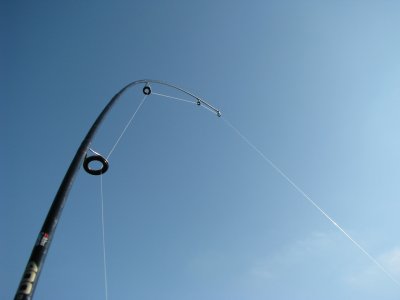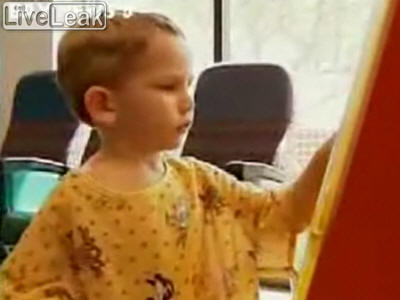People who are really drowning don't look like they are drowning, the point to notice those who are quietly sinking

The captain of the boat jumped into the water with his clothes on and rushed to the couple who were swimming near the boat where the anchor was dropped off. My wife shouted when I was playing with water, so my husband laughed, 'I think you're drowning,' and shouted, 'It's okay!' To drive away the captain. To do.
However, the captain, who slipped between the couple, headed for rescue with his nine-year-old daughter, who was quietly drowning just 10 feet behind the couple. After being rescued by the captain's arm, the girl cried 'Dad!' For the first time.
The captain, a former lifeguard , was able to notice the girl drowning from a distance, but the couple were completely unaware that their daughter was drowning in the immediate vicinity. Such cases are not uncommon, and it seems that people who are rubbed with the image that 'a drowning person looks like this' on TV or movies often do not notice the person who is actually drowning. So how can you find someone who is drowning?
Drowning Doesn't Look Like Drowning – Mario Vittone
https://mariovittone.com/2010/05/154/
Mario Vittone , a writer specializing in maritime safety who has 19 years of experience as a rescuer in the U.S. Navy and the United States Coast Guard , gave the example of the couple and a former lifeguard mentioned above, 'Even if you hear this story I wasn't surprised at all. Water death is almost always a quiet event like a deception. It's like being rubbed on a TV, waving, splashing water, and screaming. People are rarely seen in reality. '
Although the number of water accidents is smaller than that of traffic accidents, the mortality rate is about 50%, which is much higher than that of traffic accidents. About 750 children under the age of 15 die each year in the United States, with half of the fatalities occurring within 25 yards of parents and supervising adults, 10% of which. It is a case where he witnessed a child drowning but did not notice that he was drowning.

So how do you notice someone who is actually drowning quietly? To do this, it is important to know the 'Instinctive Drowning Response' listed below. This was defined by Dr. Frank Pia , a former lifeguard expert in rescue method development and lifeguard training.
■ In most cases, it is physiologically impossible for a drowning person to speak out and ask for help . The primary purpose of the respiratory system is to breathe, and speaking out is a secondary function. Only when you can breathe can you afford to speak.
■ The mouth of a drowning person repeatedly sinks below the surface of the water and rises above . The time your mouth is above the surface is not long enough to inhale and exhale to call for help, and when your mouth is above the surface, you rush to inhale before it sinks below the surface. Is full.
■ Drowning people cannot wave their hands to ask for help . It instinctively stretches its arms to the side and tries to push its head above the surface of the water by pushing it down.
■ During this instinctive reaction, the drowning person cannot control the movement of his arm on his own initiative . Physiologically, a person struggling on the surface of the water cannot do 'voluntary movements' such as waving to call for help, moving in the direction of the rescuer, or grabbing a thrown float.
■ During this instinctive reaction, the drowning person's body is in a vertically standing position, but there is no evidence of a treading water. If not rescued, it takes only 20 to 60 seconds to move up and down near the surface of the water while struggling, after which it sinks to the bottom of the water.
Thus, the instinctive reaction of a drowning person is quiet and unnoticed without knowing the signs of interest. Vittone cites the following signs as points to identify a drowning person.
・ The head is submerged in the water and the mouth is near the surface of the water.
・ The neck is bent back and the mouth is open.
・ I have expressionless and hollow eyes, and I can't focus.
・ Closed eyes
・ Forehead and eyes are hidden in hair
・ Treading water posture, no legs
・ Hyperventilation or out of breath and gasping
・ I'm trying to swim in a certain direction, but I'm not moving forward
・ I'm about to turn
・ Movement like climbing an invisible ladder in the water
However, this does not mean that the person calling for help in a loud voice does not really need help, and the person calling for help by raising a voice or waving his arm is the next step to be quiet as described above. He said he was in an 'instinctive reaction'. In other words, it is possible to raise a voice until the stage before it begins to drown in earnest, but it seems that many people begin to drown quietly soon after raising their voice. If you can rush to the rescue while you can speak, the rescuer is still able to move his arms voluntarily and can grab a rope or buoy.
Suppose someone who falls off the boat floats on the water and stares up at the boat. Even if it looks like there is no problem at first glance, it is important to say 'Is it okay?' If you get a reply saying 'I'm fine', you're probably really fine, but if you look back with a blank face, you may need to rescue within 30 seconds.
' Children playing in the water usually make a loud noise. If they suddenly become quiet, you should check why they are quiet and whether they are drowning, ' Vittone said.
Related Posts:
in Note, Posted by darkhorse







